Looking after your tent
Caring for your canvas
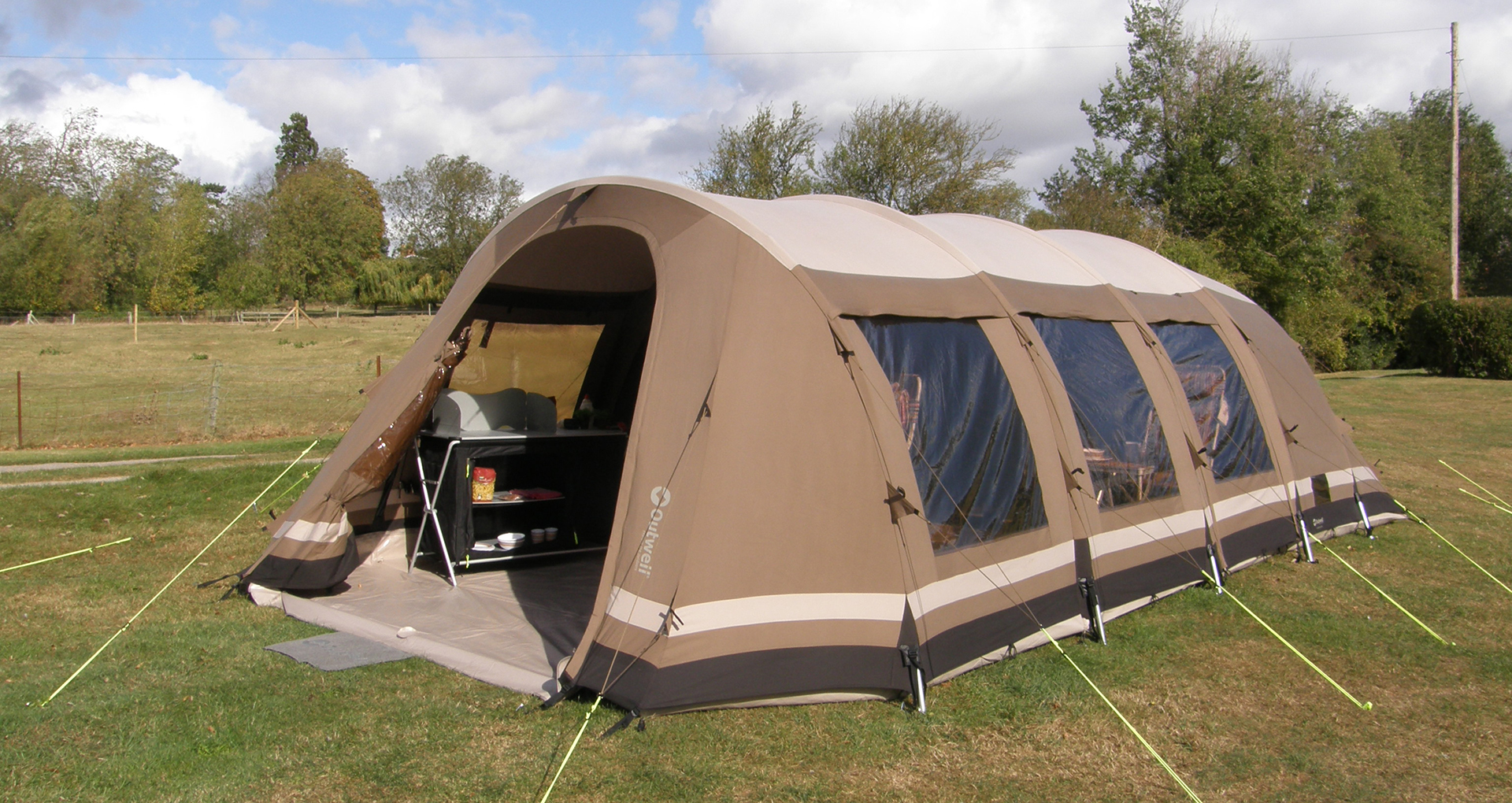
If you’ve invested time and money in getting a tent you’ll want it to last. This guide gives some pointers to help make sure your tent provides the best accommodation for as long as possible, assuming you’re prepared to put in a little time and effort.
If you look after your tent it should provide you with many years of holiday memories – and it starts at the campsite. Before unpacking your tent, check the ground for stones, old pegs or anything else that might damage your groundsheet. You may like to consider using an extra piece of material – known as a footprint – underneath the groundsheet to protect it.
When you pitch, position the guy lines carefully so the fabric doesn’t flap (which can cause excessive wear) but don’t have it so tight it’s under stress. Different fabrics react in different ways to the rain and temperature changes so it’s worth checking the tension in the guy lines occasionally throughout your stay. Also, check the pegs are pointing in a direction that won’t allow the guy lines to slip off or the pegs to pull out of the ground.
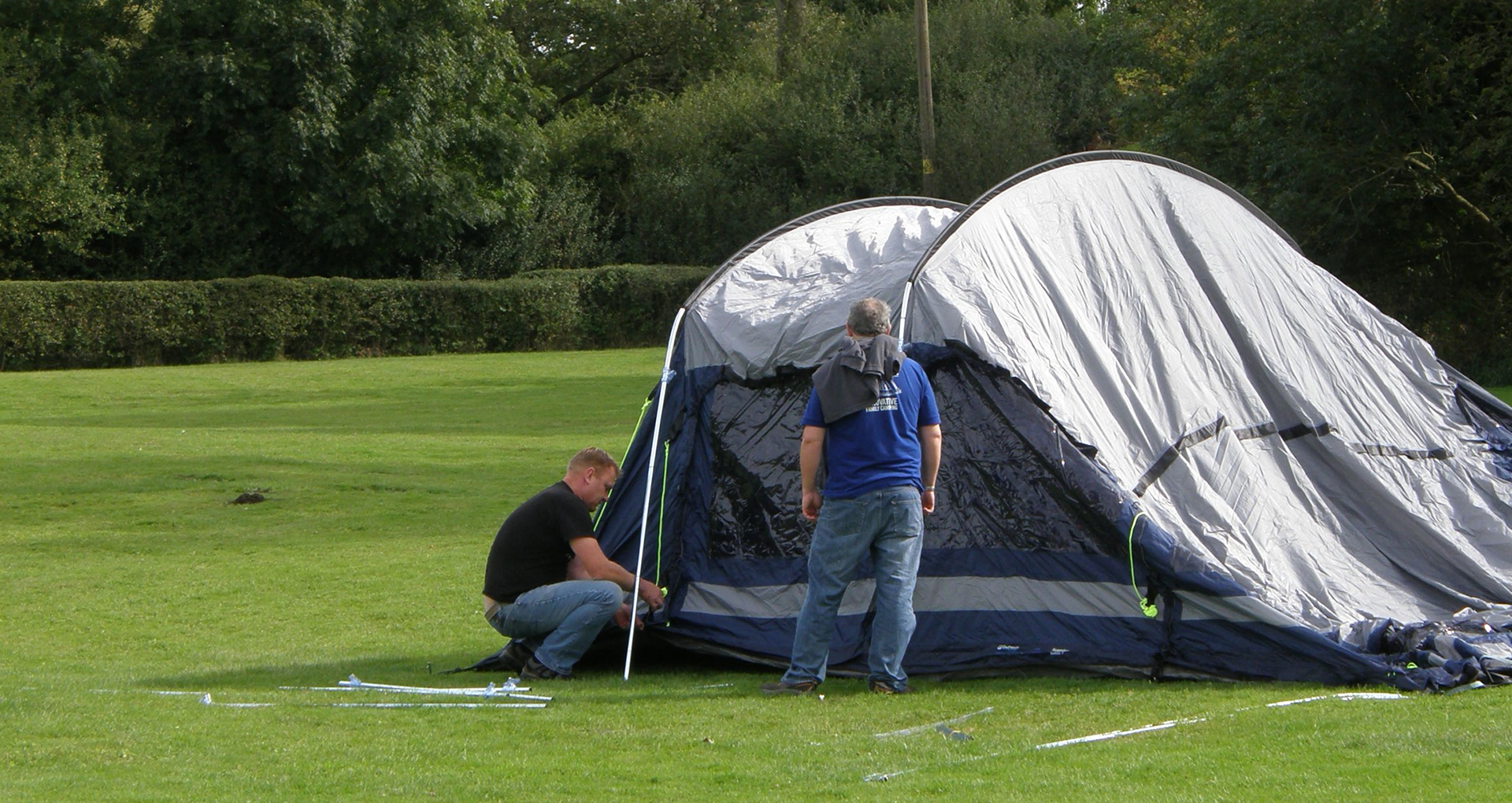
Pitch your tent carefully to avoid damage
Cleaning and reproofing your tent
It’s normally easiest to clean and reproof your tent when it’s pitched. This way you can work methodically around the whole unit and be sure you’ve cleaned and treated it all. Please don’t put your pride and joy into the washing machine – neither the machine nor the tent will fare well.
- Brush off any loose dirt and if necessary scrape it off gently with a flat-bladed knife or a piece of plastic – old store or credit cards can be good for this
- Use a cleaning liquid to clean the fabric, taking care to match the type of fluid to your tent fabric and follow the instructions carefully
- If necessary use highly diluted bleach to tackle mould and mildew stains. Sterilising liquid, such as that used for baby bottles, is good for this. It may not remove the black staining (bleach in concentrations strong enough to do this could permanently damage the fabric) but it should kill the organisms that create the marks and prevent the musty smell they produce
- Rinse thoroughly with clean water to remove all traces of the cleaning fluid
- Allow to dry naturally
- Waterproof the fabric using a reproofing liquid, again appropriate to your tent, following the instructions carefully
- If done correctly water will bead on the surface and run
- Allow to dry naturally
Repair kits
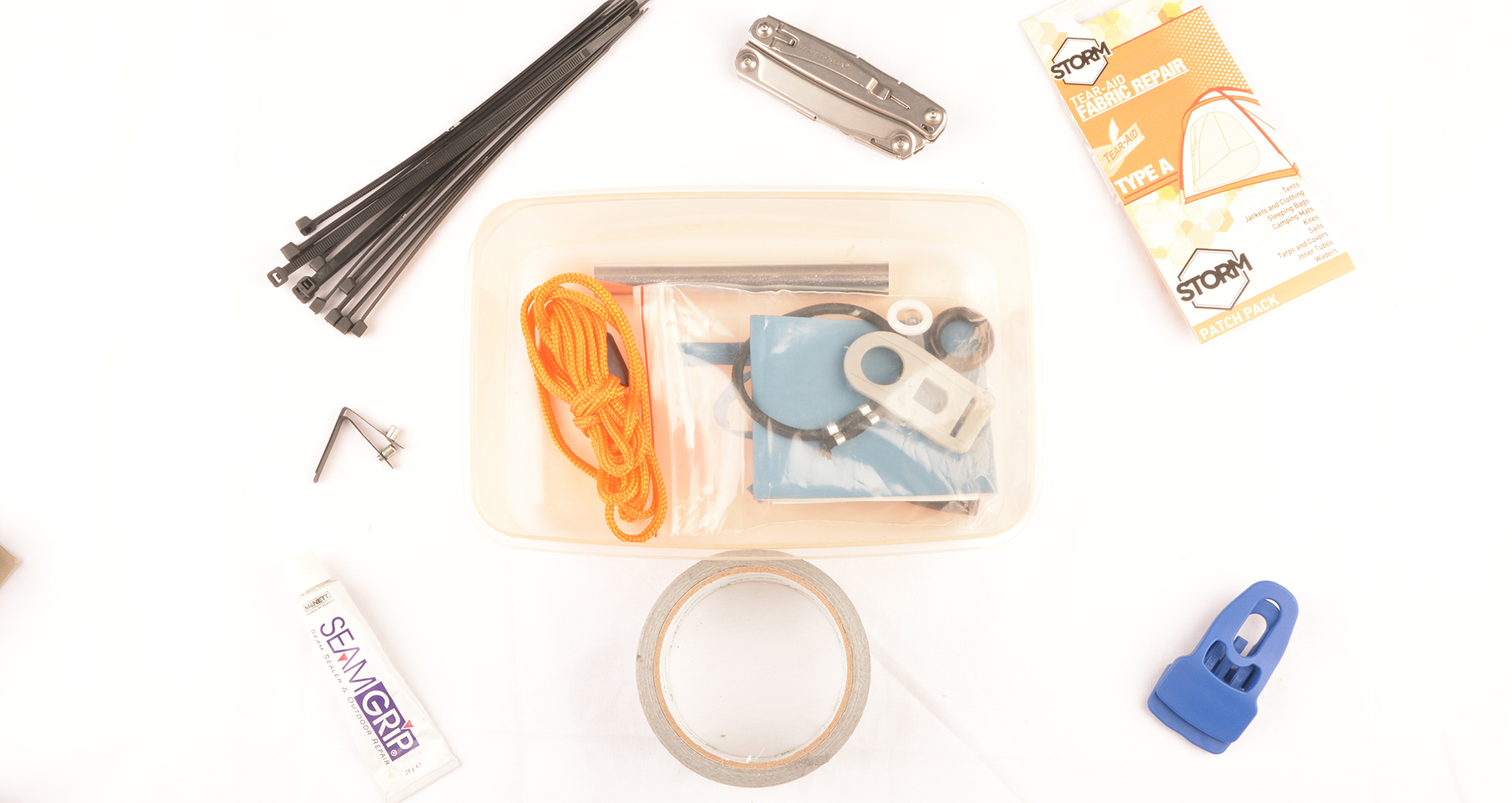
Some tents come with a small repair kit that includes a short section of pole, a spare guy rope, patches of fabric and adhesive. If your tent doesn’t have this, it’s worth putting together a similar pack. You may like to add some plastic cable ties and a roll of gaffer tape along with a few extra pegs. Add a decent mallet and peg puller and a kit like this should allow you to fix most problems while you’re out camping.
If you need to solve a problem temporarily in the field, don’t forget to make a more permanent repair when you get home – chances are you’ll forget about it if you wait until your next trip.
Packing away
Here’s a checklist to make sure your tent has the best chance of being in perfect condition when you next need it:
- Check the fabric (the outer, any inner tents and the groundsheet) to make sure it’s clean and dry, cleaning, repairing and reproofing if necessary.
- Inspect the poles, cleaning and repairing them as required. Check the ends, any connecting cords, spring links and other attachments to make sure they are not damaged. If you need to re-thread an elastic cord, a bulldog clip can be useful to secure the cord to stop it springing back. Store the poles in a separate bag to prevent them damaging the fabric of your tent.
- Clean and count the pegs. If you need to straighten any you can try holding them in a vice and tapping them with a hammer. If any are missing, consider replacing them with some different types of pegs to suit different ground conditions (see our guide - Choosing your tent materials). Store the pegs in a separate bag to prevent them damaging the fabric of your tent.
- Check the connecting points around the tent, including pegging points and guy lines.
- Look over all the seams and reseal if necessary.
- Inspect any windows, vents, flyscreens and other items for damage.
- Try the zips. Use a lubricant (a proprietary spray or candle wax) on any that don’t run freely.
- Avoid folding the tent the same way every time to prevent wear along the folds.
- Store your tent in a cool dry place out of direct sunlight. Don’t keep it in a plastic bag or you may have a problem with condensation.
Poles
Your tent is probably most vulnerable when you are pitching it and taking it down again. Poles, for example, can fracture or break if they are over stressed when you thread them into their sleeves. If they are really sticking try a little silicone furniture polish. Avoid oil or grease as it can damage the fabric.
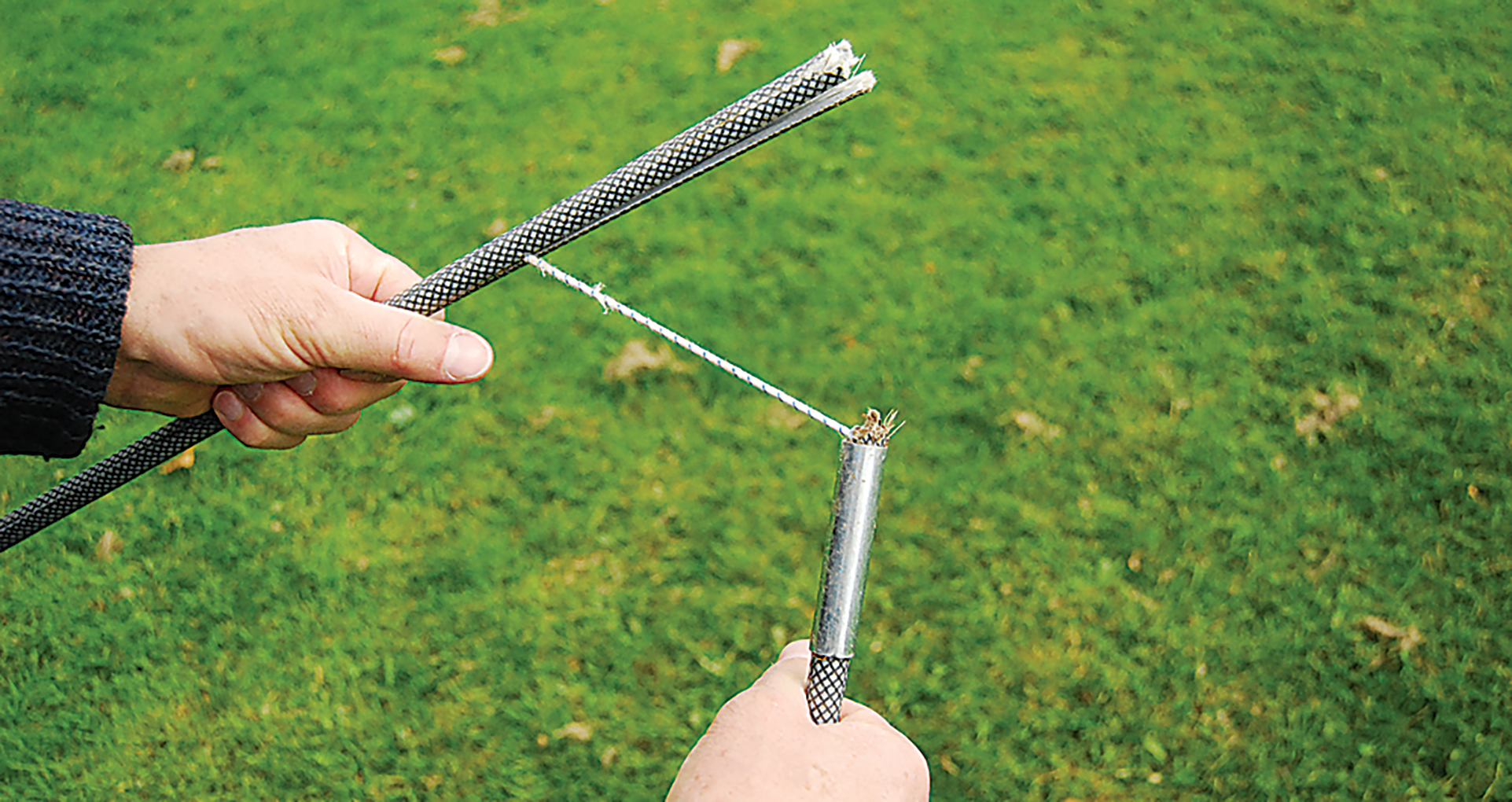
If you discover a bent or broken pole be sure to fix it before your next trip
Always push a pole into its sleeve carefully so you don’t tear the fabric. Avoid pulling sectional poles as the parts will often separate and can catch easily.
If a pole breaks, gaffer tape or the more traditional lashing with string (search for ‘lashings’ on scoutbase.org.uk for more information) can provide a temporary repair in the field, but it’s worth buying a new section or complete pole as soon as possible. Outdoor retailers generally carry a selection of poles that can be cut to size to replace a broken part. Ideally take the broken pole with you to the store to find a good match. If this isn’t practical, make a note of the material it’s made of (GRP, aluminium alloy or steel), its diameter and the length you need before you visit. Alternatively you can contact a specialist tent spares company to see whether it stocks poles for your model.
Beware the bubble!
We all love bubbles but did you know these can damage the waterproof coatings on tents. Don't let children blow bubbles close to any tent, its the same for soap, oil and grease.

Fabric
The fabric of your tent can be damaged by many things, from the acid of bird droppings to the ultraviolet light of the sun, mildew in storage to a tear from a misplaced pole. If you can, make sure your tent fabric is clean and dry before packing it away. If this isn’t possible, unfold it, clean it and allow it to dry (re-proofing it if necessary) as soon as possible to keep it in the best condition. If you have room, it’s better to store your tent unfolded as the fabric can wear along the folds over time.
If the fabric tears you can patch it simply by using a suitable adhesive to stick on a piece of matching fabric. For a more permanent repair, stitch the patch in place but remember to seal the stitching holes with an appropriate sealant. There are companies that provide a tent repair service but since tents are generally quite heavy to send in the post, it’s worth asking at your local camping store or searching online to find a local repairer to avoid transport costs.
Seams and zips
If you find the zips on your tent are getting a little difficult to open and close, you can buy a lubrication spray to get them moving again. Rubbing the wax of a candle into the zip should have the same effect. This is definitely worth doing before that first zip breaks.
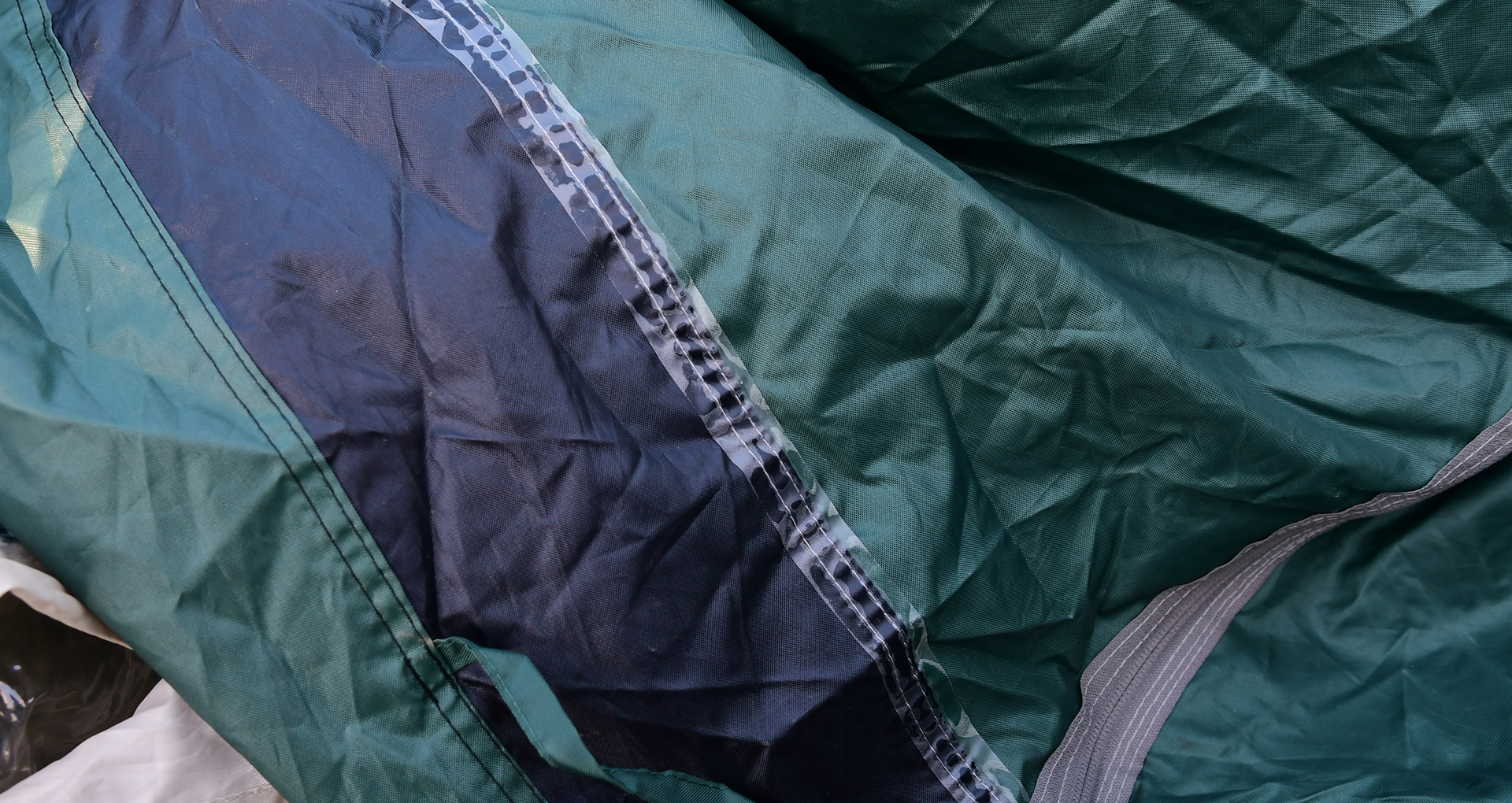
To prevent rain leaking in apply seam sealer to repair the joint
Likewise, if the seams of your tent show any signs of letting in water you can seal them using a proprietary seam sealant. Make sure the sealant is completely dry before packing your tent away to avoid the wrong bits of fabric sticking together.
What about waterproofing?
On tents made from man-made fabrics such as nylon, polyester and coated polycotton, water should form droplets on the surface of the material and then roll off. This waterproofing is normally achieved using a coating known as a durable water repellent (DWR).
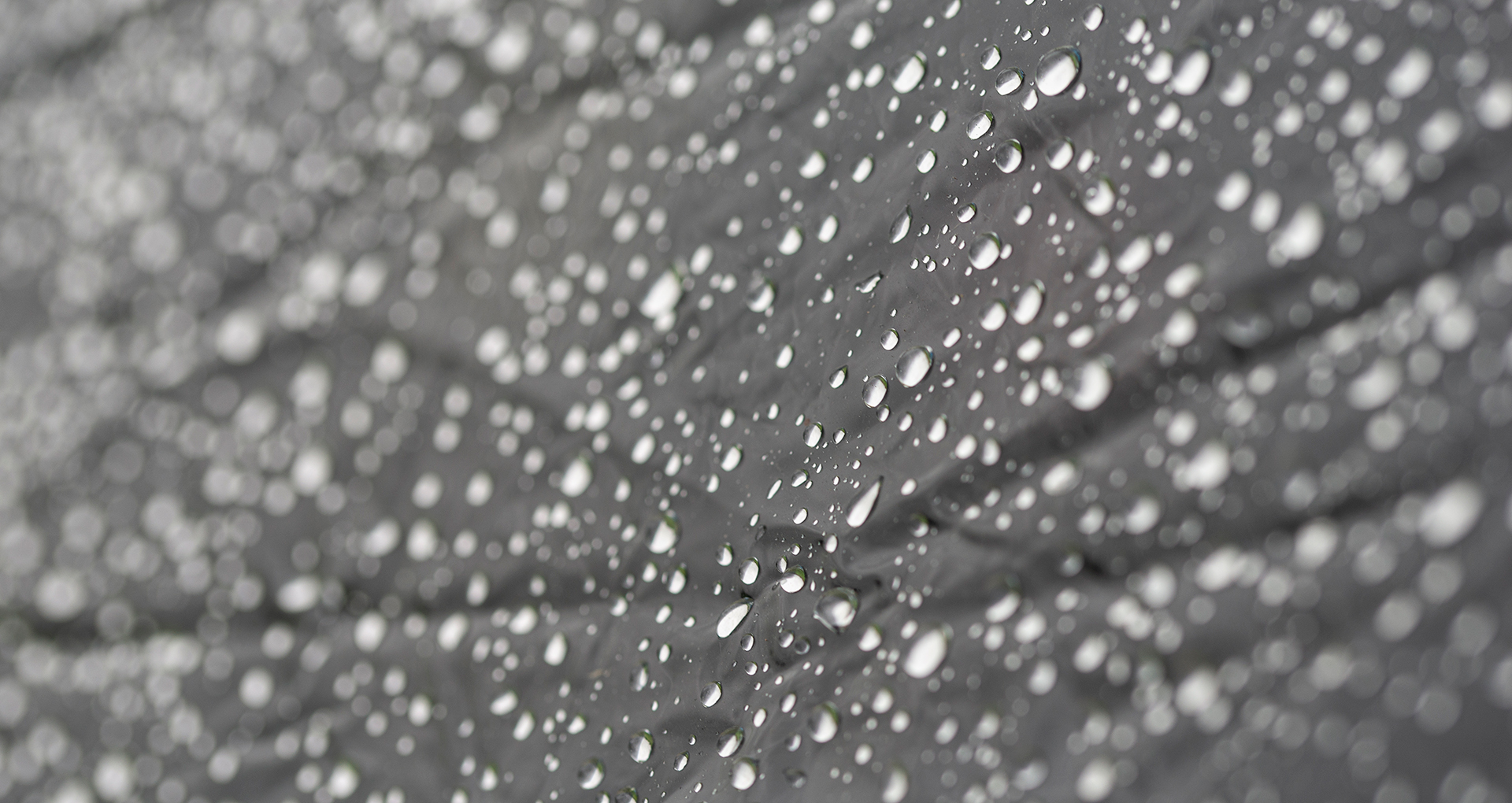
A correctly waterproof tent should bead water on the surface
The DWR can become less effective over time for a number of reasons. For example, it can degrade in sunlight or be damaged if the fabric rubs against a rough surface. If the coating fails, water will start to soak into the fabric (darkening it) and it’s time to consider re-proofing your tent.
Mildew
Mildew or mould is bad news for a tent. It is caused by fungi that will at best discolour your tent and give it a musty smell, and at worst consume the fabric until it disintegrates.
Prevention is definitely better than cure, so make sure your tent is clean and dry before you store it and try to keep it in a place that has reasonable air circulation where the surrounding air isn’t humid.
If you’re unlucky enough to find mildew or mould, prevent it from spreading by rinsing with water and white vinegar or a mild sterilising fluid such as that used for baby bottles. Leave it for about half an hour and then rinse the area thoroughly. You’ll probably need to reproof the fabric afterwards.
Keeping dry
In certain weather conditions you’re likely to find droplets of condensation inside your tent, even if you’ve taken every precaution to make it waterproof.
This is especially true in nylon or polyester tents and it is one reason these generally have breathable inner tents – if the water collects on the outer fabric it doesn’t drip directly on you at night.
You can minimise condensation by keeping a good airflow through your tent. Keep the vent panels open and make sure you don’t accidentally block any low-level panels with items such as sleeping bags or storage packs.
Weathering
It used to be standard practice to weather a tent before using it. A new 100 per cent cotton canvas tent will often leak when it first gets wet so it’s preferable to soak it in a controlled environment first. The process of thoroughly wetting the tent, known as weathering, allows the fibres to swell and fill any gaps in the weave. You can do this by pitching the tent and leaving it out in the rain for a while or by spraying it with water from a hosepipe or watering can.
When the canvas dries the fibres remain close and the next time it rains you should remain dry inside. Natural fibres tend to react differently to man-made materials when they are wet so it’s generally best to use natural guy lines (such as hemp) on cotton tents and man-made guy lines on polyester, nylon and similar tents.
